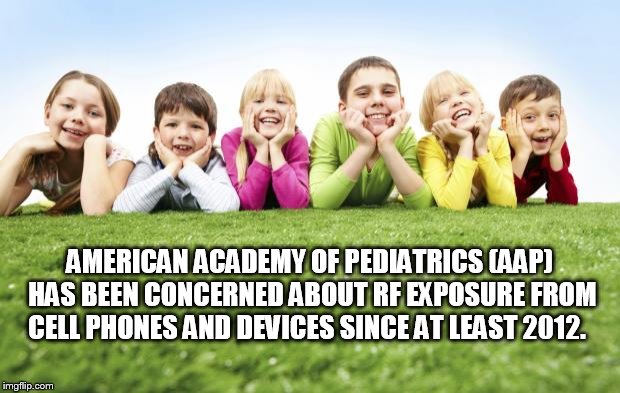 By B.N. Frank
By B.N. Frank
“When you finally get off of it you suddenly think, ‘I’m thirsty, I’m hungry, I have to go to the bathroom’…but you don’t feel those while you’re on screens.”
On May 1, 2018 Good Morning America featured a segment about The American Academy of Pediatrics (AAP) new recommendations for kids and “Screen Time.”
For several years now, tech inventors including Steve Jobs have limited their own children’s use of technology in their homes as well as sent them to expensive private “low tech” schools.
All the while, technology has been marketed as necessary for American public school kids to get a good education. They start learning on computers at an early age. They spend a significant amount of time using tech in classrooms and for completing homework. PBS’s Sesame Street even has a character named “Smarty” who is a “Smart” phone.
Nobody may have addressed this hypocrisy better than Dr. Screen Mom when she titled her 2017 article, “The Rich Get Smart, The Poor Get Technology: The New Digital Divide in School Choice.”
Dr. Screen Mom isn’t the only one who has drawn attention to this. There’s even a documentary called Screenagers.
Over the last year, there have also been confessions from remorseful tech inventors and investors about how they knowingly created software and products that could lead to “Digital Addiction.”
Despite all the bad press, tech companies continue to encourage and enable tech use for educational and recreational use. They continue to promote risky 5G technology which Dr. Oz described as being necessary to “binge watch, surf, and post online” at higher speeds without our screens freezing up or becoming disconnected.
All things considered, because public school kids are required to use technology so much, it has made parents almost powerless in setting “Screen Time” limits for educational or recreational purposes. It has set up parents and kids to fail.
 GMA followed-up the AAP guidelines with a 3-minute segment featuring a family who allowed a videotaped experiment of their 4 kids managing their own “Screen Time” for 48 hours. There was no bed time and no limits. There were melt downs though.
GMA followed-up the AAP guidelines with a 3-minute segment featuring a family who allowed a videotaped experiment of their 4 kids managing their own “Screen Time” for 48 hours. There was no bed time and no limits. There were melt downs though.
The parents kept tallies of screen time hours:
- 6-year-old Cooper: 35 hours
- 9-year-old Spencer: 46 hours
- 11-year-old Kaitlyn: 29 hours
- 11-year-old Jackson: 16 hours
The quote that introduced this article was taken from 11-year-old, Jackson, who actually spent the least amount of time on screens.
When 6-year-old Cooper was asked if he’d like to spend the next weekend the same way, he said yes. Remember, Copper spent 35 hours on screens within 48 hours.
Of course, parents should try to limit their kids “Screen Time.” But how do they do this when public schools require so much “Screen Time”? This is asking the impossible – especially when tech companies are even putting WiFi on school busses
The GMA segments were only about the AAP recommendations about limiting “Screen Time.”
AAP has voiced also voiced their concerns about RF exposure from cell phones and electronic “screen” devices over the years many times. Here are a few examples:
- In 2012, AAP wrote a letter to the Federal Communications Commission Chairman and asked him to open up a review of RF guidelines from cell phone exposure.
- In 2012, AAP wrote a letter to then US Representative Dennis Kucinich in support of his “Cell Phone Right to Know” Act.
- In 2013, AAP wrote a letter to FCC Commissioner Mignon Clyburn and FDA Commissioner Margaret Hamburg requesting that they call for a review of RF guidelines.
No “safe” level of cell phone or wireless (WiFi) radiation has still been scientifically determined for children or pregnant women. A documentary called Generation Zapped was produced about this.
Other information parents might want to know:
- 2012 Research has determined that cell phone and WiFi radiation can disrupt the blood-brain barrier which may cause it to leak.
- Research has determined that exposure to cell phone and wireless (WiFi) radiation can worsen pre-existing conditions even if it didn’t cause them.
- Some scientists insist that all sources of Wireless WiFi Radiation be classified as “Carcinogenic” instead of “Possibly Carcinogenic.”
- In 2016, researchers at the Mayo Clinic determined that “Sending Text Messages On Your Smartphone Changes The Rhythm Of Your Brain Waves.”
On March 29, 2018, The Nation published an article about cell phone and wireless WiFi radiation exposure and 5G technology. Reporters referred to the Telecom Industry as “Big Wireless” and compared them to “Big Tobacco” and “Big Oil.” Both Democracy Now and NPR did follow-ups on this topic.
The 1976 film, Network was a satire about how television had changed an entire generation and not necessarily for the better.
There are obviously similarities between television and digital technology. But with today’s tech, anyone may take their “screens” with them wherever they want. That wasn’t the case with television sets.
I think most would agree that technology isn’t all bad, it’s just being used too much.
It’s overwhelming to think about what can be done about this. At the same time, in 1980, it only took one ticked off and heartbroken mother to start what eventually became “Mothers Against Drunk Driving”.
If any of this concerns you, fortunately you are not alone. There are plenty of organizations who are already trying to improve conditions in our new “Digital World.” Please reach out to them for more information.

Be the first to comment on "“Good Morning America” Experiment on Kids and Unrestricted Screen Time"